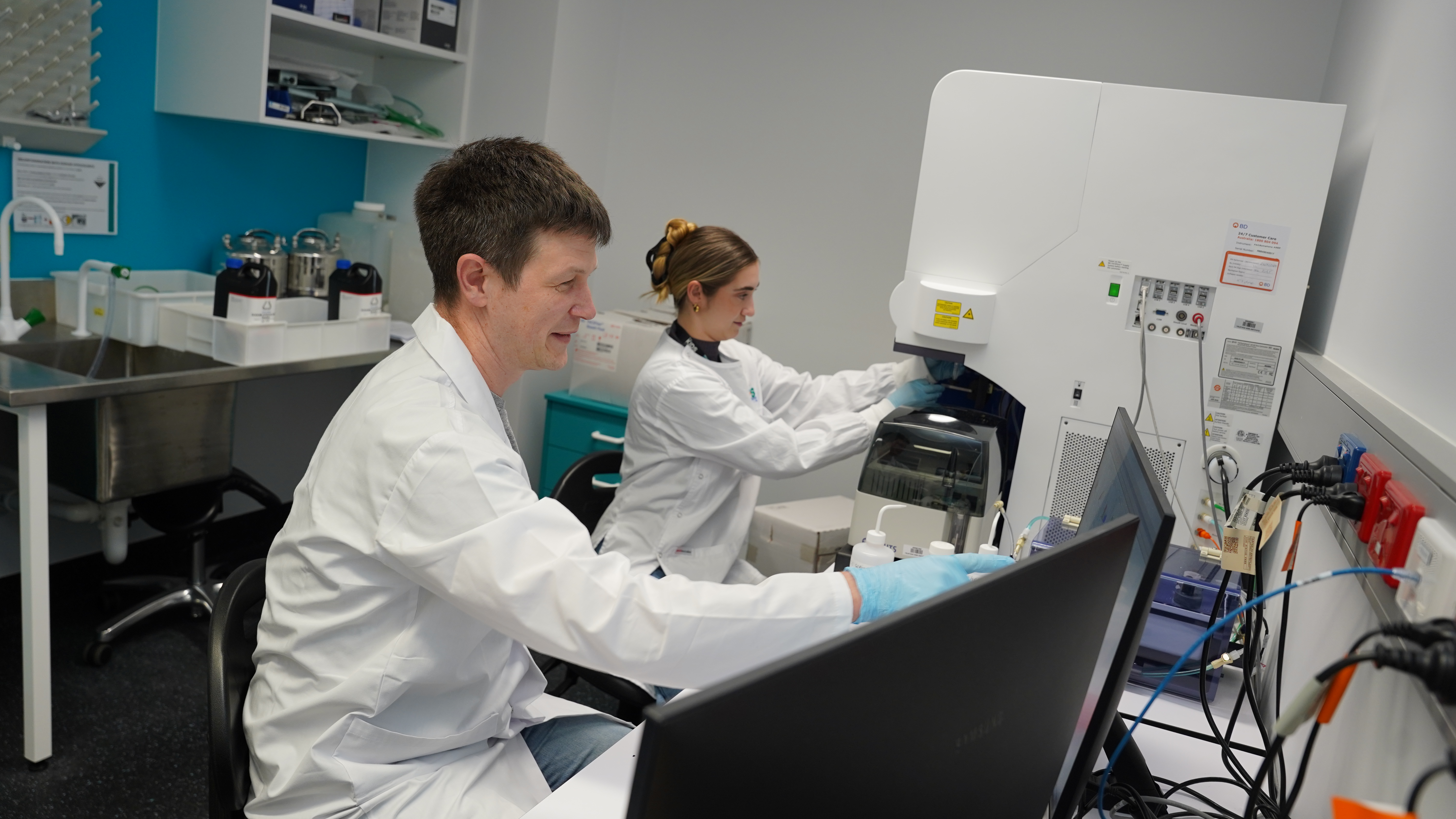
Dr Jonatan Leffler and Isabelle Cohen
Why do some children sail through winter bugs while others tip into wheeze and asthma flare‑ups? New research digs deeper into how children's immune systems handle viral challenges, and strengthens evidence that children with asthma may struggle more with viral infections.
Led by the Wal‑Yan Respiratory Research Centre, a powerhouse partnership between The Kids Research Institute Australia, Perth Children’s Hospital Foundation and Perth Children’s Hospital, the study examined a type of immune cell, called a plasmacytoid dendritic cell (pDC), which helps protect against viruses by releasing type I interferons - the body's early antiviral signal.
Using samples from 71 seven‑year‑olds, the researchers exposed pDCs to a virus-like cue in the lab, and watched how they responded. The results showed two clear patterns:
- Children with strong interferon responses were less likely to have asthma.
- Children with low interferon responses were more likely to have asthma and be allergy-sensitised.
“The results show that those with the lower interferon response were more likely to have asthma and a higher allergy burden. It helps explain why colds and flu can be a speedbump for one child, and lead to a hospital visit for another,” said senior author Dr Jonatan Leffler.
To further explore how allergy might relate to these patterns, the team mimicked an IgE mediated allergic reaction in the lab to briefly press the cells’ allergy sensor. After this step, the virus‑fighting cells were less responsive and genes that normally turn on antiviral defenses were less active, especially in children whose cells had more of the IgE allergy sensor.
These findings show how allergy‑type signals can influence and impair virus response.
“This work doesn’t tell a brand‑new story, but it gives us a sharper picture of the cells involved and the genes that may be pulling the strings. It strengthens the link between allergy, weaker antiviral responses, and asthma,” said Dr Leffler.
While the work was done in the lab, the results could have practical implications such as being a useful risk flag, especially for wheezy children where it’s hard to tell who may develop persistent asthma and who may grow out of it.
“We can’t diagnose asthma from this, but the pattern could help us estimate risk more accurately, offering clearer treatment pathways," said Dr Leffler.
The team hopes to repeat the work in younger children and in twins to learn whether a low antiviral response is something you’re born with or something that develops over time. The long term, big picture vision is to develop a rapid drop‑of‑blood‑on‑a‑chip test that shows how well a child’s immune system tends to respond to viruses, so care teams can tailor treatment more effectively.
The researchers acknowledge all study participants, their families, and the study recruitment team. The study was funded by the Wal-yan Respiratory Research Centre, and Dr Leffler is supported by a fellowship from the Stan Perron Charitable Foundation.
